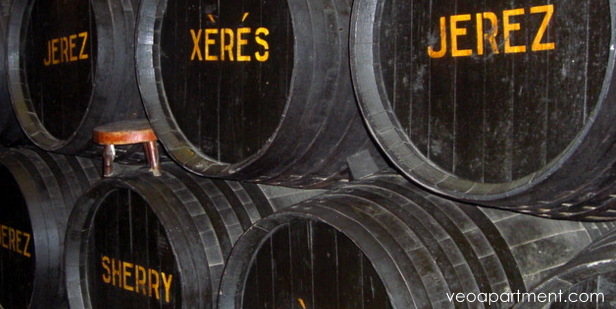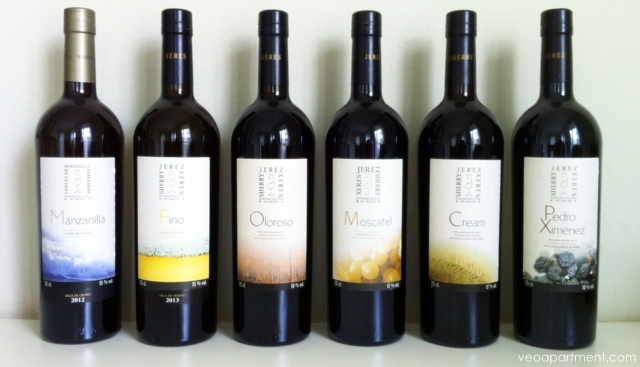Deep in the southwest of the magical kingdom of Spain lies a mysterious region known to its intrepid explorers as the Sherry Triangle. Unlike its Bermudan namesake, however, it is not most famous for things that disappear (though people venturing in have been known to never emerge again), but for what comes out of it.

Different layers of barrels are used for blending older and younger wines
Now, right now you may be thinking – Sherry? That’s that dark, overly sweet stuff that Grandma serves up on Christmas day, isn’t it? Well, yes… and then again, no. Sherry is actually any wine made in the Sherry region (officially the area regulated by the commission that oversees the production and quality control of wines labelled Jerez-Xeres-Sherry), a roughly triangular area between the towns of Jerez, Sanlúcar de Barrameda and Puerto de Santa Maria, that produces some of the world’s most complex and unique wines.
Wine has been produced here at least since Roman times, and has seen many ups and downs in its quality and popularity since then, but it’s currently having something of a renaissance, not only in Spain, but also in other European markets. The English, in particular, have had a long love affair with sherry that dates back to Elizabethan times, when it was known as sack (probably from the Spanish verb sacar, meaning “to take out”) and was referred to by Shakespeare in several of his plays.
Almost all sherries are made from the palomino variety of grape, which is particularly well suited to the triangle’s light chalky soil, the albariza, though sweet dessert sherries may be made wholly or partly from Pedro Ximenez or Muscatel. After fermentation, the wine is fortified, and then may be aged under a layer of yeasts, called flor (making fino or manzanilla sherries), or exposed to the air (oloroso sherry), or both (amontillado and palo cortado sherries), in a system of barrels known as a solera, in which wines of different ages are blended together.

Different types of sherry from dry (left) to sweet (right)
Most sherries are exceptionally dry, and are an excellent accompaniment to the famous Spanish hams and cheeses (and almost anything else!), and there is no gastronomic experience more quintessentially Spanish than sitting in a traditional style bar somewhere in southern Spain, eating jamon with a manzanillo or fino sherry. If you haven’t tried it yet, put it on your to-do list immediately.
If you’re already an aficionado, or just interested in wines, you might like to take a day trip to Jerez, and tour one of sherry bodegas, where you can learn more about how it’s made and some of the traditions that have grown up around it. You can find a list of bodegas that give tours through the Jerez Tourism board.